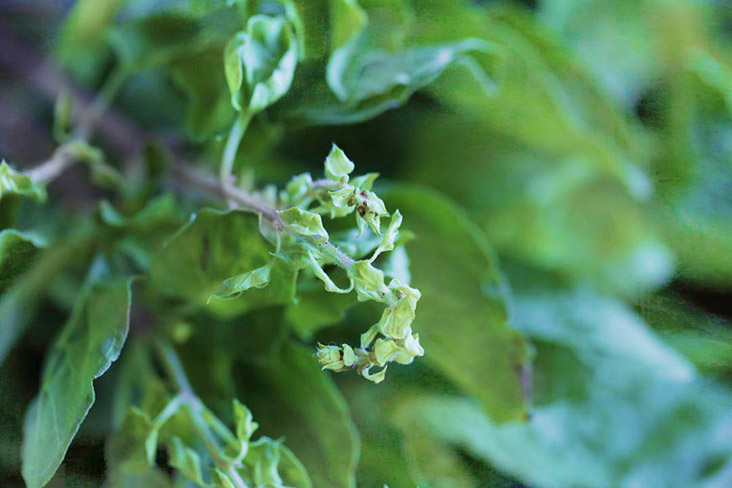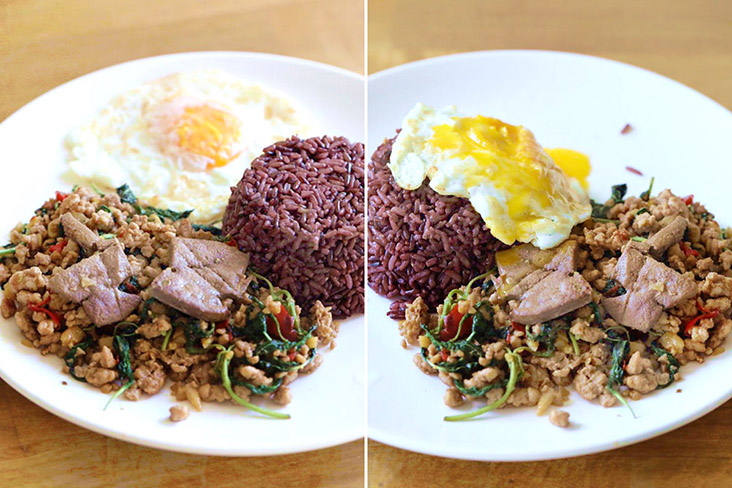KUALA LUMPUR, June 5 — Food fuels our bodies but also our souls. Every dish is its own form of nostalgia, particularly if you had it for the first time in a faraway city, in some distant land.
Perhaps it’s the Schwarzwälder Kirschtorte you had in the forest of Freiburg. The layers of chocolate sponge, the whipped cream and maraschino cherries, the splash of kirschwasser or cherry spirit.
As you take your first bite, you delight in the cheesy notion of eating Black Forest Cake in the Black Forest.
Perhaps it’s spending hours exploring the wondrous aisles of a konbini (Japanese convenience store) in Tokyo. You uncover one local delight after another.
From picnic-ready onigiri rice balls for summer to steaming hot oden for winter. My favourite is the ubiquitous katsusando, a sandwich of breaded pork cutlet and tonkatsu sauce that is so much more than the sum of its parts.

Perhaps it’s the dà jī pái — large, flattened pieces of deep fried chicken — that you first tasted in the Shilin Night Market in Taipei many years ago.
The original night market has since shifted, moved indoors and underground. It’s a different experience now. All that remains is your nostalgia for that very first bite, the crunchy bits of batter shattering and the hot chicken fat smearing your face.
For it’s not the calories but the memories that last long after the meal is over.
What about Thailand, then? I certainly cook enough recipes from the Land of Smiles.
There is pad Thai, that quintessential Thai noodle dish, and there is tom yam goong, that spicy and sour soup with succulent prawns. For dessert, you can’t go wrong with mango sticky rice.

These are all delectable and definitely worth a repeat performance in the kitchen, weekend or not. Yet the one Thai dish that has captured my heart — and my gluttonous loyalty — is perhaps the simplest dish of them all: pad krapao.
The name pad krapao comes from pad, which means “stir fry” and krapao, which is holy basil, the herb that imbues the dish with such intense aromatics.
Studies have shown that holy basil has pharmacological properties to reduce stress and anxiety, surely something we all need more of!
You can find pad krapao at any street stall nestled away in some small soi or side alley in Bangkok. Restaurant chains offer it as a staple on their menu, sometimes gussied up with bacon or pricey seafood.

The convenience stores always carry ready-to-eat packs of it in their chiller, needing just a few seconds in the microwave oven.
Pad krapao in Thailand reminds me of nasi lemak in Malaysia: beloved by folks from all walks of life.
Now that is a taste worth celebrating.
The best pad krapao I ever tasted was a last-minute affair, a late lunch after a day of wandering around the Saraburi province. It was cooked by a friendly Thai lady in the front yard of her house. Everyone in the neighbourhood called her Auntie Pin.
The crackle of the holy basil as the leaves hit the very hot wok. The swift stir fry; time is of the essence. The unexpected addition of pork liver; utterly melt-in-the-mouth as I later found out. I still remember all that — the sight, the sounds and above all, the smells, oh what a delicious aroma! — till today.

In honour of Auntie Pin, here’s to cooking our very own pad krapao at home. Here’s to that special touch — a sliver or two of tender flash fried liver — and recapturing that taste of that late afternoon lunch in Saraburi.
We may not be able to travel for now, but we can always return — with a good recipe, time on our hands and a dogged determination to taste that never forgotten taste again.
PAD KRAPAO TUB MOO
The version of pad krapao that Auntie Pin made and that I am replicating here is called pad krapao tub moo, or stir fried holy basil with pork livers.
The base is actually pad krapao moo sap or stir fried holy basil with minced pork, but clearly it’s the topping of luscious livers that is the highlight here.
If you would like to keep your liver separate from the holy basil stir fry, you can always flash fry them with some sliced onions with some fish sauce for a tasty side to go with the main rice dish.

Serve this with hot and fluffy steamed jasmine rice. Or try something different and try kao niow dahm, a long grain glutinous rice that is purplish black in colour. Chewier than normal rice, its hue alone could whet your appetite.
The addition of a single khai dao or Thai-style sunny side up with crispy edges is entirely optional. Except I would argue a proper plate of pad krapao, whatever meat or seafood you use for the stir fry, is incomplete without this fried egg topping.
There’s nothing quite like popping the yolk and watching it run slowly all over your pad krapao. Oozing slowly, like lava, the rich yolk adds another layer of creaminess to both the rice and the aromatic stir fry.
Most would fry the egg after the holy basil stir fry, but I’ve observed that most street vendors fry the eggs first, and the holy basil and livers second. This way the flash fried livers are still moist and tender when served; they’ll harden if set aside for too long.
Ingredients
Neutral vegetable oil
1 large egg
6 cloves garlic, minced
3 chillies, sliced and gently crushed
300g minced pork
100g pork liver, washed thoroughly and sliced
1 tablespoon fish sauce
2 tablespoons oyster sauce
1 tablespoon light soy sauce
1 tablespoon dark soy sauce
1 tablespoon sugar
Water, if necessary
45g holy basil leaves (approximately 1½ cups)
Method
First, add a little vegetable oil to the wok; enough to coat the surface. Use medium high heat so the wok gets really hot. Crack the egg directly into the wok. Don’t move the egg but ladle hot oil over it so it cooks quickly. Remove from the wok once the egg has set but the yolk is still runny. Set aside for later.
Add a little more oil if the wok is dry. Heat the oil up again at medium high heat. This will be a quick stir fry so, again, the wok has to be really hot.
When the oil is hot enough, add the garlic and chillies. Fry for a few minutes till they have released their aroma. Add the minced pork and continue to stir briskly.

Once the meat is about half cooked, add the liver and continue to stir fry. Before the livers are fully cooked, add the fish sauce, oyster sauce, light soy sauce, dark soy sauce and sugar. Add some water if the sauce is too clumpy and needs thinning out.
Right before serving, add the holy basil leaves. Give it one quick stir, then remove the wok from the heat. The leaves will wilt in the residual heat.
Serve the holy basil stir fry over hot steamed rice of choice (e.g. jasmine rice, brown rice or kao niow dahm). Top it with the fried egg you cooked earlier.
For more Weekend Kitchen and other slice-of-life stories, visit lifeforbeginners.com.






















